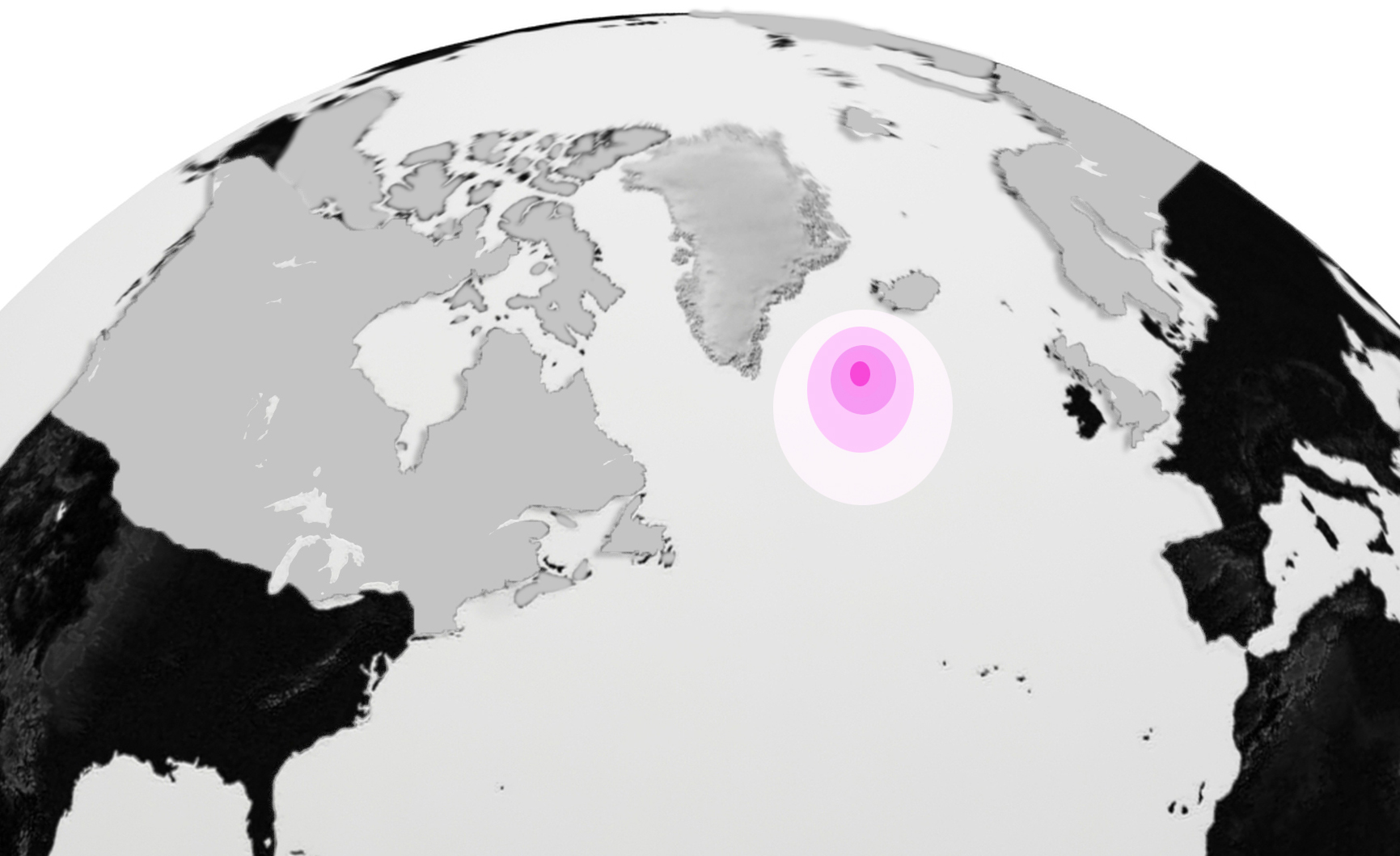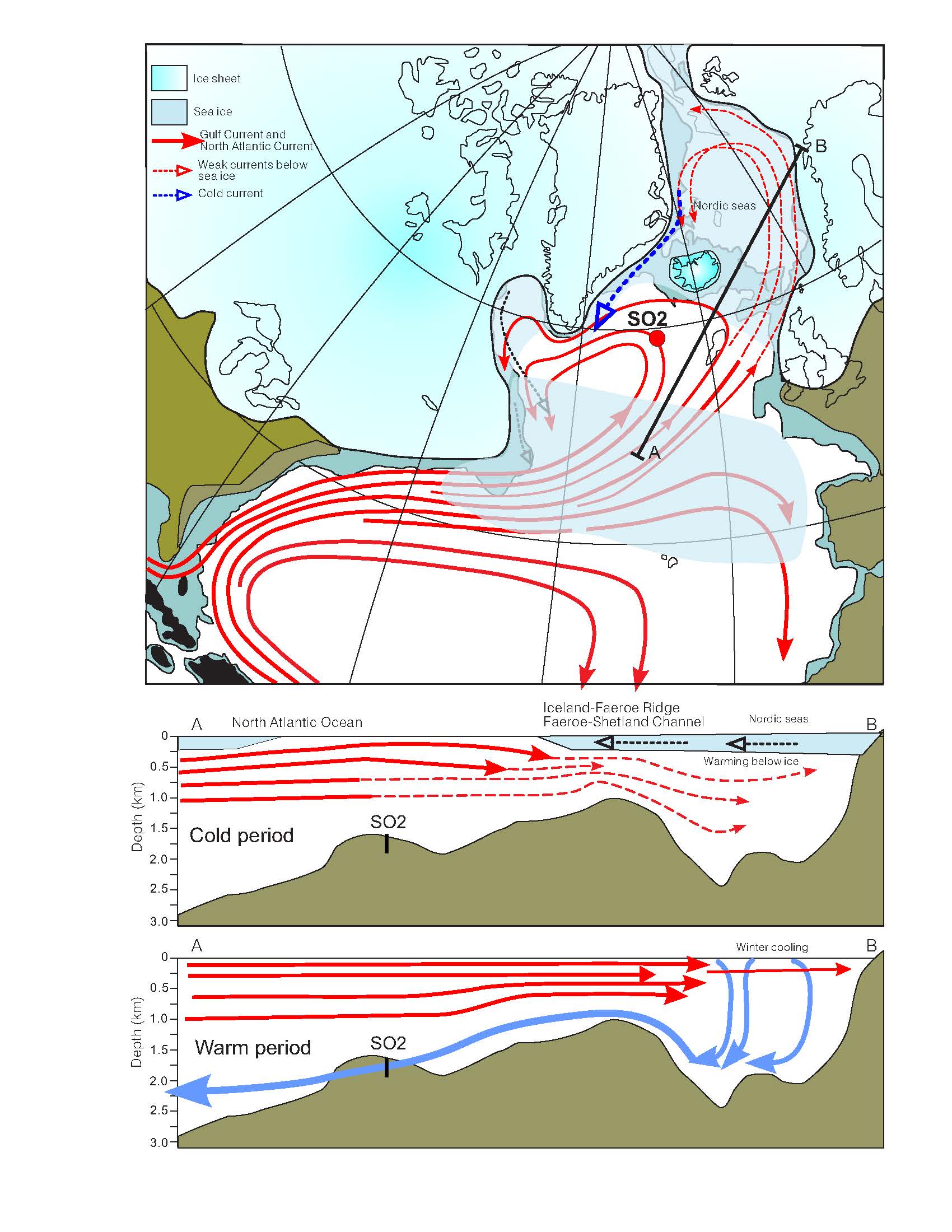'Warm Blob' Caused Wild Climate Swings During Last Ice Age

A "warm blob" of surface water played a role in Greenland's wild climate swings during the last ice age, a new study finds.
Greenland's climate flipped quickly and brutally from cold to warm and back again 25 times between about 20,000 and 70,000 years ago, ice cores and ocean sediments show. The abrupt climate swings, called Dansgaard-Oeschger events, involved extreme changes in average temperature. Each time, the cold snaps continued for centuries, while the rapid warming lasted a few decades.
The new study adds to evidence that warm Atlantic Ocean currents set the tempo for Greenland's climate swings. The findings were published Feb. 5 in the journal Scientific Reports.
The Atlantic Ocean's modern-day currents are similar to its ice age circulation pattern, with the Gulf Stream pulling heat from the southern and tropical Atlantic toward the North Atlantic. In the cold Nordic seas, the Gulf Stream cools off, and the cold water descends, flowing back to the south to repeat the cycle. [See Stunning Photos of Greenland's Melting Glaciers]
Researchers think the wild ice age climate swings are linked to a temporary pause in deep, sinking cool water. "Most researchers agree that these [climate] shifts were controlled from the Northern Hemisphere through an 'on and off switch' of deep-water formation in the Nordic seas," lead study author Tine Rasmussen told Live Science in an email interview. "This study clarifies that the whole of the Atlantic was involved," said Rasmussen, a professor at the Centre for Arctic Gas Hydrate, Environment and Climate in Tromsø, Norway.

According to the study, when the subpolar regions were in the midst of a cold snap, with thick ice cloaking land and sea, a blob of warm water still pushed slowly northward toward Greenland and Iceland, even though the deep-water convection system was slack.
"During cold periods, the surface and intermediate water of the Atlantic from Antarctica to Iceland gradually warmed, finally penetrating below the sea ice into the Nordic seas," Rasmussen said. "Once the ice was gone, the pump started up again, bringing additional warm water into the Nordic seas. And we got a warmer period for 50 years," she said.
Sign up for the Live Science daily newsletter now
Get the world’s most fascinating discoveries delivered straight to your inbox.
The researchers determined past ocean temperatures by examining fossils in an ocean sediment core collected southeast of Greenland, along 60 degrees north latitude. This area is close to the Nordic seas and Greenland ice cap, yet still represents the open Atlantic, Rasmussen said.
The researchers tracked changes in ocean temperature with foraminifera — tiny, shelled organisms that record water conditions during their lifetimes. The team compared the temperature changes to the arrival and disappearance of iceberg-carried debris.
The results also confirmed that iceberg activity followed the rapid warming events. This suggests that warm water broke up sea ice and calving glaciers in the North Atlantic, the researchers said. This delivered icebergs and fresh water into the sea, again slowing down the deep-water current.
Although the sudden climate swings aren't a good analogue for human-induced climate change, the findings could be used to test and improve the global climate models, the researchers said. "The situation during the ice age, as we see it, was quite different," Rasmussen said. "We see the abrupt climate changes during the ice age basically as warming during a cold period. [This is] in contrast to the present situation, where a future abrupt climate change would be a cooling during a warm period," she said.
Follow us @livescience, Facebook & Google+. Original article on Live Science.










